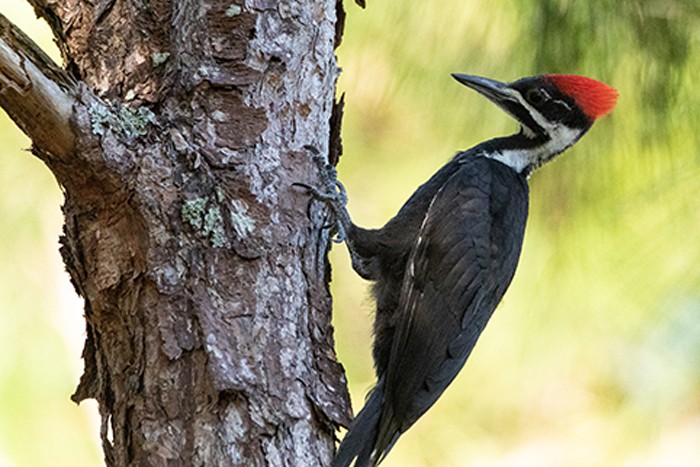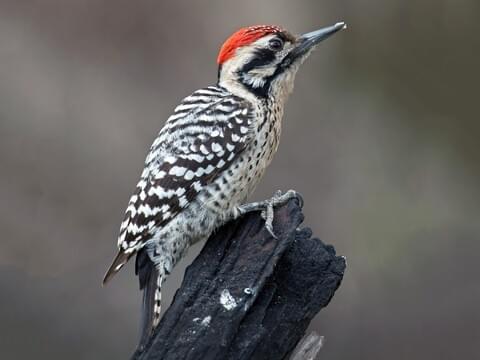Unveiling the Tricks of Woodpeckers: Actions, Habitat, and A Lot More
Woodpeckers, with their special actions and specialized adjustments, have actually lengthy interested researchers and nature lovers alike. By discovering the mysteries surrounding woodpeckers' behavior and environment selections, a much deeper understanding of these avian wonders emerges, supplying a glance right into their remarkable world.
Woodpecker Behavior Insights
In analyzing woodpecker actions, an interesting display of specialized skills and adjustments emerges, losing light on their remarkable ecological particular niche. Woodpeckers, understood for their distinct drumming on trees, possess a selection of behavior qualities that add to their survival and success in their setting.
Furthermore, woodpeckers display an unique feeding habits characterized by their capability to extract bugs from tree bark utilizing their specialized beaks. Their long, barbed tongues help in capturing victim, while their solid neck muscles supply stability and precision throughout pecking motions. This feeding strategy permits woodpeckers to access concealed insect larvae and extract them with amazing performance.
Habitat Preferences and Selection
What aspects affect the environment preferences and choice of woodpeckers? One important aspect influencing woodpecker habitat choice is the availability of suitable nesting sites. Woodpeckers typically prefer forests with a mix of fully grown trees that give enough possibilities for dental caries excavation.
Furthermore, woodpeckers show a preference for habitats with a bountiful supply of food resources. They are mostly insectivorous, eating beetles, ants, larvae, and other insects located in worn out timber or tree bark. As a result, woodpeckers have a tendency to favor woody locations with a diverse insect population to fulfill their dietary needs.
Furthermore, the visibility of dead or worn out trees is one more key consider woodpecker habitat selection. These trees not just offer food sources yet also offer appropriate substrate for dental caries excavation. Dead trees are vital for the maintenance of healthy and balanced woodpecker populations, as they play an essential function in the woodpeckers' life cycle and ecological community dynamics.
Feeding Behaviors and Diet Plan Composition
Woodpeckers show a specialized feeding behavior focused on foraging for pests within various habitats. In enhancement to pests, woodpeckers likewise take in tree sap, fruits, nuts, and seeds, including variety to their diet plan depending on the period and availability of food sources.
The foraging methods of woodpeckers are well-adapted to their arboreal way of life (Woodpeckers in Florida). Their capability to dig deep into timber not just supplies them with food however additionally aids in developing nesting dental caries and developing regions. Woodpeckers play an essential role in maintaining the health of forests by controlling insect populaces and assisting in the disintegration of timber. Recognizing their feeding behaviors and diet regimen structure is necessary for preservation efforts aimed at preserving these unique and valuable birds.
Drumming Seems and Communication
Making use of quick drumming noises on various surface areas, woodpeckers use a distinctive kind of interaction to Visit Website signal region limits and draw in mates. This drumming actions is not only a method of interaction but additionally acts as a way for woodpeckers to develop their existence within a particular location. The intensity, rate, and pattern of the drumming can convey vital info to other woodpeckers in the location.
Woodpeckers utilize drumming audios to reveal their presence in an area and to warn off possible intruders. The loud and recurring nature of the drumming functions as a clear signal to various other woodpeckers that the area is currently claimed. imp source This assists in reducing problems and reducing physical battles between people.

Survival Adaptations and Specialized Makeup

Verdict
Finally, woodpeckers display distinct behaviors, such as drumming audios for communication, and have specialized makeup for survival in their selected habitats. Their feeding behaviors and diet regimen structure further show their versatility to various settings. By comprehending these aspects of woodpeckers, scientists and guardians can better shield and protect these fascinating birds and their ecological communities.